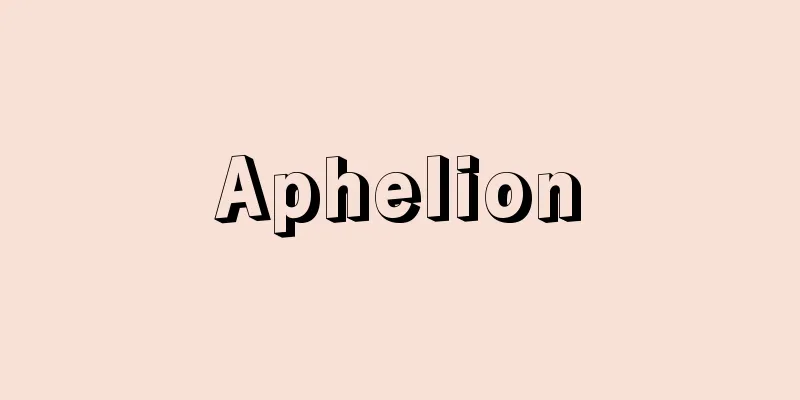Aphelion

|
All planets and most comets in the solar system orbit the Sun in an elliptical orbit, with the Sun at one focus of the ellipse. The point on an orbit where the planet is farthest from the Sun is called the aphelion. It is opposite the perihelion, where the planet is closest to the Sun. Earth reaches aphelion in early July, when it is about 152 million km from the Sun. Source: Encyclopaedia Britannica Concise Encyclopedia About Encyclopaedia Britannica Concise Encyclopedia Information |
|
太陽系内のすべての惑星および彗星の多くは,太陽の周囲を楕円形の軌道を描いて公転し,太陽はその楕円の1つの焦点に位置を占める。そこで,軌道上の太陽に最も遠くなる点を遠日点という。最も近くなる近日点の反対側にある。地球は7月初めに遠日点に達し,そのときの太陽からの距離は約1億 5200万 kmである。
出典 ブリタニカ国際大百科事典 小項目事典ブリタニカ国際大百科事典 小項目事典について 情報 |
Recommend
Engawa
…In Western cuisine, it is fried or served in gra...
Illustrated Newspaper - Eirishinbun
A newspaper published in the Meiji era that featur...
Okunohira - Okunohira
...It is thought to have been formed by the Sojid...
Freezing point - Gyokoten
The temperature at which a liquid changes into a ...
Cistoclemmys flavomarginata (English spelling) Cistoclemmysflavomarginata
...A distinctive feature of box turtles is that t...
Kougakuji Temple
Located in Kamiozou, Enzan, Koshu City, Yamanashi...
Automobile Acquisition Tax
This is a special purpose tax levied by prefectur...
standard playing record
...This method is still used in modern records, a...
Edward Hyde, 1st Earl of Clarendon
1609‐74 British politician and historian. He studi...
Hana Ueno Homare Stone Monument - Hana no Ueno Homare no Ishibumi
Joruri. Historical piece. 10 acts. A collaboration...
Recumbent fold - Ougashukyoku
A type of crust that has been folded to an extreme...
Christian - Kirishitan
Japanese Christians (Catholics) from the end of t...
Klič, K.
In 1879, the Czech Karl Klič (1841-1926) develope...
Mount Hakusan
A volcano that stands on the border between Ishika...
Dolin, A.
…Initially simply called the Ballet Theatre, the ...









